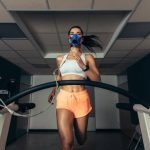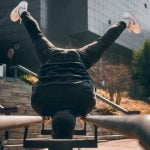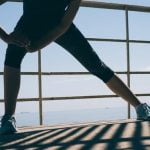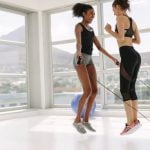Fitness Blender workouts have gained immense popularity among fitness enthusiasts due to their accessibility, effectiveness, and convenience. Many people prefer exercising in the comfort of their own room to avoid crowded gyms or unfavorable weather conditions.
One common question that often arises is whether it is safe and effective to do these workouts barefoot. In this article, we will explore the benefits of exercising without shoes, assess the safety of Fitness Blender workouts without footwear, provide tips for optimizing barefoot workouts in your room, address common concerns, and share real-life success stories of individuals who have incorporated this practice into their routines.
Exercising without shoes has numerous advantages that can enhance your overall workout experience. By going barefoot, you allow your feet to strengthen and develop better balance over time. Additionally, being fully grounded with direct contact between your feet and the floor improves proprioception – your body’s awareness of its position in space. These benefits contribute not only to injury prevention but also to improved performance during Fitness Blender workouts.
Nowadays, doing Fitness Blender workouts barefoot is considered safe due to their low-impact nature and emphasis on bodyweight movements. However, certain precautions should be taken into account for your own safety. It is important to choose the appropriate surface for barefoot exercise such as hardwood flooring or exercise mats to minimize any discomfort or potential injuries. In cases where some level of foot protection is desired, options like minimalist shoes or yoga socks might be considered.
The Benefits of Barefoot Exercise
Exercising without shoes, also known as barefoot exercise, has gained popularity in recent years and offers several benefits for those looking to improve their fitness. This section will discuss the advantages of working out without shoes, including improved balance, foot strength, and proprioception. Additionally, it will explain how barefoot exercise can help prevent injuries and enhance performance.
Improved Balance
One of the key benefits of barefoot exercise is improved balance. When we remove our shoes, we allow our feet to better sense the ground beneath us, leading to enhanced proprioceptive feedback. Proprioception refers to our ability to sense the position and movement of our body parts without relying on sight.
By exercising barefoot, we engage the smaller muscles in our feet that are often neglected when wearing shoes. This not only strengthens these muscles but also helps improve overall balance and stability.
Foot Strength
Another advantage of working out without shoes is that it promotes foot strength. Traditional athletic shoes often provide excess cushioning and restrict natural foot movement. Going barefoot allows our feet to move more naturally and encourages proper alignment and muscle engagement. With each step or jump during a Fitness Blender workout done barefoot, the muscles in our feet work harder to provide stability and absorb impact. Over time, this increased workload can strengthen the muscles in your feet and ankles.
Injury Prevention and Performance Enhancement
Engaging in fitness activities like Fitness Blender workouts barefoot can help prevent certain injuries and enhance performance. For instance, exercising sans shoes can reduce the risk of ankle sprains by enhancing ankle stability through muscle activation in the lower legs and feet.
Additionally, some studies suggest that going barefoot can improve running mechanics by promoting a forefoot strike pattern rather than landing with excessive force on the heel. This change in gait biomechanics may lead to a reduction in impact-related injuries and better running efficiency.
Overall, the benefits of barefoot exercise are numerous and can greatly enhance your fitness journey. By improving balance, strengthening your feet, and reducing the risk of certain injuries while also potentially enhancing performance, exercising without shoes in the comfort of your room can be a safe and effective way to engage in Fitness Blender workouts. However, it is essential to assess the safety aspects before starting these workouts without footwear.
Assessing the Safety of Fitness Blender Workouts without Shoes
When it comes to doing Fitness Blender workouts in your room, one common question that arises is whether it is safe to do these workouts barefoot. It is important to evaluate the safety of exercising without shoes to ensure a comfortable and injury-free workout experience. In this section, we will examine the factors that make Fitness Blender workouts suitable for barefoot exercise, while also clarifying any potential risks or limitations.
One major advantage of Fitness Blender workouts is their low-impact nature and focus on bodyweight movements. These types of exercises place minimal stress on the joints, making them safer to perform without shoes. Additionally, many of the Fitness Blender routines incorporate cardio exercises like jumping jacks or high knees that can be performed more effectively with bare feet. This allows for better grip and stability on the floor, reducing the risk of slipping or tripping.
While Fitness Blender workouts are generally safe to do barefoot, it is important to note any potential risks or limitations. Some individuals may have specific foot conditions or injuries that require extra support or protection during exercise. In such cases, consulting with a healthcare professional or a fitness trainer would be beneficial to determine if modifications are necessary.
To further enhance the safety and comfort of your barefoot workouts, consider choosing the right surface and footwear for your room. Hardwood or laminate floors provide a firm and stable surface for exercising without shoes. If you have carpeted floors or prefer additional cushioning, using an exercise mat can provide both comfort and support.
| Fitness Blender Workout Safety Factors | Safety Assessment |
|---|---|
| Low-impact nature | Minimal stress on joints |
| Focus on bodyweight movements | Reduced risk of slipping or tripping |
| Foot conditions or injuries | Potential need for modifications or added support |
| Ideal flooring options | Firm and stable surfaces like hardwood or laminate floors |
Choosing the Right Surface and Footwear for Barefoot Workouts
When it comes to doing Fitness Blender workouts barefoot in your room, there are a few factors to consider to ensure a safe and comfortable experience. One of the most important considerations is choosing the right surface for your barefoot exercise. Whether you have hardwood, laminate, or carpeted flooring, it’s essential to create an environment that supports your workout and reduces the risk of injuries.
For those with hardwood or laminate floors, these surfaces can provide excellent traction and stability for barefoot workouts. However, it’s crucial to make sure they are free from any debris or sharp objects that could cause harm. Sweeping or vacuuming the area before starting your workout can help create a clean and safe space.
If you have carpeted flooring in your room, it may not provide the same level of stability as harder surfaces. In this case, using an exercise mat can help improve traction and cushioning during your workouts. Look for mats specifically designed for exercising without shoes to ensure proper grip and support.
While going completely barefoot is ideal for some individuals, others may prefer to have a minimal level of foot protection during their workouts. In this case, yoga socks or minimalist shoes can be a viable option. These types of footwear offer some grip and comfort while still allowing you to maintain the benefits of barefoot exercise.
By carefully selecting the right surface and considering appropriate footwear options, you can maximize safety and comfort during your fitness blender workouts barefoot in your room. Remember that finding what works best for you may involve some trial and error, so don’t be afraid to experiment with different setups until you find the perfect fit.
- Sweep or vacuum the area before starting your workout
- Use an exercise mat if you have carpeted flooring
- Consider using yoga socks or minimalist shoes
- Find what setup works best for you
Techniques to Optimize Barefoot Workouts in Your Room
Performing Fitness Blender workouts barefoot in your room offers a unique opportunity to optimize your exercise routine and get the most out of your workout. Here, we will explore some techniques to enhance your barefoot workouts, ensuring that you maintain proper form and maximize the benefits of exercising without shoes.
- Focus on Foot and Ankle Strength: One of the key advantages of barefoot exercise is the opportunity to strengthen your feet and ankles. Incorporate exercises that target these areas specifically, such as calf raises, toe curls, or balancing on one leg. By improving the strength and stability of these muscles, you can enhance your overall performance and reduce the risk of injuries.
- Mindful Movement: Paying attention to proper form and technique is crucial when doing Fitness Blender workouts barefoot. Stay mindful throughout each exercise and focus on engaging the correct muscles. Take note of how your feet are positioned and make adjustments if necessary to maintain proper alignment. This mindfulness will not only help prevent injuries but also improve body awareness and control.
- Gradually Increase Intensity: If you are new to barefoot exercise or have not trained without shoes before, it is important to gradually increase the intensity of your workouts. Start with shorter sessions at a moderate level of difficulty and gradually build up both duration and intensity over time. This gradual progression allows your feet to adapt gradually, reducing the risk of overuse or strain.
- Listen to Your Body: As with any workout routine, it’s essential to listen to your body’s signals during barefoot workouts. If you experience pain or discomfort in your feet or ankles, take a moment to evaluate whether it’s due to fatigue or improper form. It is always better to pause or modify an exercise if needed than push through potential injuries.
By incorporating these techniques into your barefoot workouts, you can optimize the benefits of exercising without shoes and improve your overall performance. Remember to always prioritize safety and consult a healthcare professional if you have any concerns or pre-existing foot conditions. Happy barefoot exercising.
Enhancing the Barefoot Workout Experience
When it comes to doing Fitness Blender workouts barefoot in your room, there are several ways to enhance the overall experience and create a more comfortable and motivating environment. By incorporating these suggestions, you can maximize the benefits of your workout and make it more enjoyable.
Firstly, consider investing in good quality speakers or headphones. Fitness Blender workouts often include audio cues and instructions that guide you through the exercises. By having clear and high-quality sound, you can better understand and follow along with the workout, leading to improved form and performance.
In addition to audio enhancements, you can also utilize other elements to create a pleasant atmosphere during your barefoot workout. Consider adding aromatherapy by using scented candles or essential oils like lavender or eucalyptus. These calming scents can promote relaxation and help create a spa-like ambiance in your room.
Furthermore, adjusting the lighting in your room can also make a big difference in enhancing the workout experience. Dimming the lights or using soft lighting sources can create a soothing environment that allows you to focus on your body movements without any distractions.
Lastly, incorporating personal touches into your workout space can increase motivation and make the experience more enjoyable. Add motivational quotes or pictures of fitness role models on the walls surrounding your workout area. This visual inspiration can boost morale and remind you of your fitness goals.
By implementing these suggestions, you can elevate your barefoot workout experience to new heights. Remember that creating a comfortable environment is crucial for maintaining consistency and achieving success in any fitness routine.
| Tips to Enhance Your Barefoot Workout Experience |
|---|
| – Invest in good quality speakers or headphones for clear audio cues during the workouts |
| – Utilize aromatherapy with scented candles or essential oils |
| – Adjust the lighting in your room to create a soothing atmosphere |
| – Add motivational quotes or pictures of fitness role models to inspire you during workouts |
Common Concerns and FAQs about Barefoot Exercise
Hygiene and Foot Odor
One common concern people may have about exercising barefoot in their room is the issue of hygiene and foot odor. Without the barrier of shoes, it is natural to wonder about the accumulation of sweat and bacteria on your feet. However, it is important to note that proper foot hygiene can address these concerns.
To maintain cleanliness, make sure to wash your feet thoroughly before and after each workout session. Use a mild soap and warm water to cleanse your feet, paying special attention to the areas between the toes. Additionally, you can use an antibacterial foot spray or powder to keep your feet fresh and odor-free.
It is also beneficial to regularly clean your workout space, particularly if you are practicing barefoot exercise on a carpeted surface. Vacuuming or using a steam cleaner can help remove any dust or dirt particles that may accumulate over time. By incorporating these hygiene practices into your routine, you can alleviate any worries regarding foot odor and cleanliness while exercising barefoot in your room.
Protecting Your Floors
Another concern some individuals may have when considering barefoot workouts in their room is potential damage to the flooring. Whether you have hardwood, laminate, or carpeted floors, there are measures you can take to protect them during exercise.
If you have hardwood or laminate flooring, consider placing exercise mats underneath high-impact areas such as where you do jumps or lunges. These mats provide cushioning as well as an added layer of protection for your floors against scuffs or scratches.
For those with carpeted floors, investing in some interlocking foam tiles can offer similar benefits. These lightweight tiles provide a stable surface for barefoot exercise while protecting the carpet fibers from wear and tear.
Furthermore, keeping your toenails trimmed short can prevent accidental scratching or gouging of hard floor surfaces during workouts. By taking these precautions, you can ensure both the longevity of your floors and a worry-free barefoot workout experience in your room.
Transitioning Gradually
If you are new to exercising without shoes, it may be wise to transition gradually rather than diving straight into intense workouts. This can help prevent any potential discomfort, soreness, or injuries that may arise from suddenly training barefoot.
Start by incorporating short periods of barefoot exercise into your workouts. Begin with exercises that have lower impact on the feet, such as yoga or Pilates movements. As you get more comfortable and confident, gradually increase the duration and intensity of your barefoot workouts.
Additionally, it is essential to listen to your body and pay attention to any signs of strain or discomfort during the transition. If you experience any pain or discomfort, consider using minimalist shoes or yoga socks for added support and protection until your feet adapt to the demands of barefoot exercise.
By easing into barefoot workouts and being mindful of your body’s signals, you can minimize the risk of injury while reaping the benefits of working out without shoes in the comfort of your own room.
Real-Life Testimonials
In the world of fitness, success stories can serve as powerful motivation and inspiration for others. Real-life testimonials provide evidence of the effectiveness and benefits of various workout programs. When it comes to doing Fitness Blender workouts barefoot in your room, there are plenty of individuals who have achieved remarkable results.
Take Sarah, for example. She decided to try Fitness Blender workouts in her room without shoes after coming across an article about the benefits of barefoot exercise. At first, she was skeptical, but after giving it a try, she quickly fell in love with the freedom and stability it offered. Sarah found that by exercising barefoot, she was able to engage her foot muscles more effectively, leading to improved balance and stability during her workouts.
Not only did Sarah notice physical improvements, but she also experienced a positive impact on her overall well-being. Exercising barefoot allowed her to feel more connected to her body and be fully present in each movement. This mindfulness translated into increased focus and better mind-muscle connection during her workouts.
Another success story is Mark’s journey with Fitness Blender workouts. Being a professional athlete, he was initially hesitant about working out without shoes due to concerns about potential injuries or compromised performance. However, after extensive research and consultation with professionals, he decided to give it a try.
Marks found that doing Fitness Blender workouts barefoot not only enhanced his performance but also helped prevent certain athletic injuries like shin splints and plantar fasciitis. He noticed improved speed, agility, and coordination during sports-specific movements. Mark attributes these advancements to the strengthened foot muscles gained through barefoot exercise.
These real-life success stories highlight the positive outcomes that can come from incorporating Fitness Blender workouts into your routine while going shoeless in your room. While everyone’s experiences may vary slightly, the general consensus among individuals who have tried this approach is that it offers unique advantages compared to traditional shoe-wearing exercise methods.
Conclusion
In conclusion, the answer to the question “Can I do Fitness Blender workouts barefoot in my room?” is a resounding yes. Exercising without shoes in the comfort of your own room can offer numerous benefits for both your physical and mental well-being. The advantages of barefoot exercise, such as improved balance, foot strength, and proprioception, can help prevent injuries and enhance performance during Fitness Blender workouts.
It is important to note that Fitness Blender workouts are suitable for barefoot exercise due to their low-impact nature and focus on bodyweight movements. However, it is always wise to exercise caution and be aware of any potential risks or limitations associated with working out without shoes. Taking precautions such as choosing the right surface, such as hardwood or laminate flooring, or using exercise mats can help create a safe environment for barefoot workouts.
Additionally, if you prefer some level of foot protection during your workouts, options like yoga socks or minimalist shoes are available. It is crucial to maintain proper form and technique during these exercises, especially when performing movements that target foot and ankle strength.
Creating a comfortable and motivating environment in your room can further enhance the barefoot workout experience. Consider incorporating elements like good quality speakers or headphones for audio cues or adding aromatherapy or dimmed lighting to make the workout more enjoyable.
Finally, it is important to remember that everyone’s fitness journey is unique. By incorporating Fitness Blender workouts into their barefoot exercise routine testimonies from individuals who have experienced positive outcomes by doing so yourself can inspire others to take action. So why not give it a try? Lace up those invisible sneakers or go completely barefoot; either way, get ready to unleash your potential and embark on an unforgettable fitness journey in the comfort of your own room.
Frequently Asked Questions
Is it OK to workout barefoot at home?
Working out barefoot at home can be perfectly fine, depending on the type of exercise you are doing and your personal preference. Many people find that being barefoot allows for a stronger connection to the ground, which can enhance balance and stability during exercises like yoga or Pilates. It also allows for better foot flexibility and freedom of movement.
However, it’s important to consider the surface you are working out on. If you have hard floors, you may want to use a mat or cushioning to protect your feet from impact.
Is it OK to do step aerobics barefoot?
Step aerobics is a high-impact exercise that involves using an elevated platform or step. While it is technically possible to do step aerobics barefoot, it is generally recommended to wear proper footwear for this activity.
Having supportive shoes with cushioning and good traction can help absorb shock and provide stability, reducing the risk of injuries such as sprained ankles or slipping off the step. Additionally, shoes designed specifically for aerobic exercise tend to have features that enhance performance and safety during high-energy movements.
Is it OK to exercise in bare feet?
Exercising in bare feet is generally acceptable for many types of exercises, especially those performed on softer surfaces like grass or mats. Being barefoot can improve sensory feedback, allowing for better proprioception and control over movements.
It can also strengthen the muscles in your feet and lower legs as they engage more actively without the support provided by shoes. However, there are some considerations to keep in mind when exercising barefoot; ensure the area where you’re exercising is free of debris or sharp objects that could harm your feet, be cautious if performing exercises involving heavy weights or potential impact, and remember that individual preferences and physical conditions may differ – so ultimately it’s important to listen to your body’s comfort level when deciding whether to exercise in bare feet or not.

Passionate about providing useful information to anyone with an interest in the field of Personal Training, I strive to pass on to our readers quality information and to answer any questions about Personal Trainers, the work they do and how to become one.





